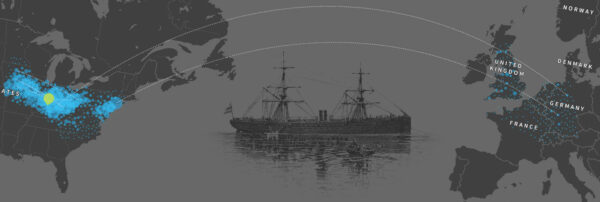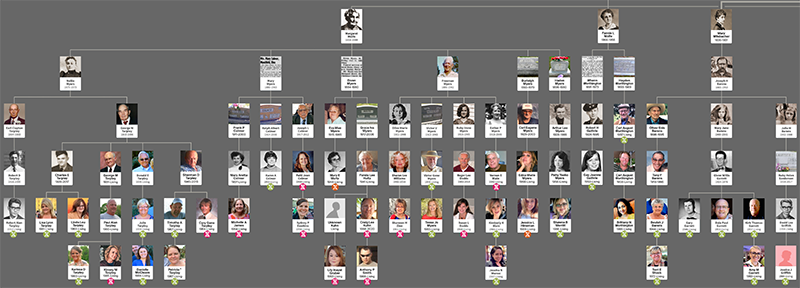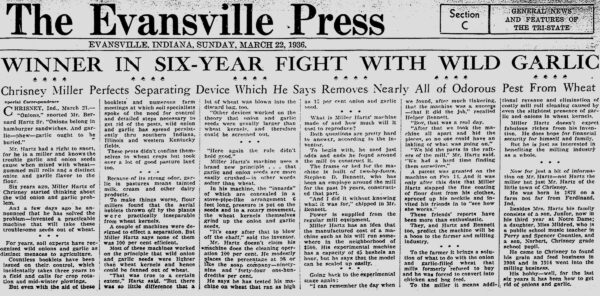Being the last of my name without kids, I’m always creating what I hope will leave some kind of legacy and impact others beyond my small family. Those efforts have been private in recent times as I’ve focused on genealogy, so I wanted to share some of my experiences, resources, and advice for others considering rubbing that lamp. As I generalize and stereotype, understand that exceptions obviously apply.

Ancestry.com is my hub, where I maintain my trees. Publicly, I only display direct-line grandparents so strangers can see which families we may both be researching. My private tree contains all the photos, records, anecdotes and personal comments, shared with few close relatives because it’s hard to convince them to sign up for a free account to view it. Alternatively I’ve created a web of over 100 cloud folders containing this media for each branch so I can control access at the family level and keep things agnostic for anyone interested. This includes stitching together screenshots of my Ancestry tree then slicing into smaller branches.
Ancestry does charge for their optional research tools and records, which get expensive to keep running long-term, and international search is on yet another tier. I don’t pay for that because FamilySearch.org offers many of those same overseas records for free, plus tree features including a large searchable community one.
After a couple years building my tree the traditional way from handwritten family documents and online records, I took DNA tests—first at Ancestry, then at 23andMe—to expand my results since the tests aren’t compatible. 23andMe is very health/traits-focused (uninteresting to me), with little to offer regarding trees or family info. It appears many users never return to the site after their initial findings. You can download your raw DNA data and upload it to other sites for free comparison, like MyHeritage.com or GEDmatch.com. Each offers unique tools to differentiate themselves, like clusters or fan view. As an American, I find that MyHeritage’s primarily European userbase skews my origin-countries percentages, but I like how they display the specific relationships between my shared matches as well as to me, which Ancestry upcharges as a “pro” feature.
This screenshot is composited to include what might be displayed about the same match on each service. Most also have ethnic composition and optional profile, where some users offer no info whatsoever. You may be able to add notes, flag, or group matches.

It still bakes my noodle that we each carry code that can be extracted from a little saliva to calculate precise relationships to people around the globe who share a common ancestor eons ago. Because my tree was already so large, DNA has mostly confirmed previous findings, making it easier to solve the identities of my matches. So far I know who 900 are and exactly how we’re related. (Insane, agreed! I wonder what the world record is …) Another 600 are part of “floating” trees of multiple matches I’ve solved but can’t yet connect to mine. Triangulating these clusters can solve mysteries once you determine which old surnames they have in common, and which families of your known matches they overlap. For example, neither parent has been tested, but enough other matches render this unnecessary in determining family sides. I also screenshot trees of only my DNA matches and their ancestors, which are my favorite because you can really see how alike everyone’s features appear when you remove in-laws.

Wear your shitting pants, because DNA keeps no secrets! It revealed new close cousins on both sides of my family. Even if a relationship is unwanted, kids have a right to know who their parents were, and I’ve helped about a dozen others find theirs … with varied reactions. One got to meet shortly before their parent’s passing, which warmed my heart. Another deleted their account right after their kid made contact. The strangest came from someone’s relief that we aren’t related, that their tormenting mother was not blood (usually fathers are the mystery). One case puzzled me how I could match a girl who died in the 1970s, until learning she had been exhumed as a serial-killer victim. While I often lament the lack of replies from the messengers built into these services, many DNA matches are in fact deceased, having rubbed this lamp near life’s end.
Missing fathers leave voids that make research difficult. You’ll notice epidemics of abandonment in certain branches, spawning generations of imitators who never learned to be parents. It’s exhausting trying to cobble info from others in his orbit who barely knew him. And sad when I’m the one revealing more about him than they’re able. Though awkward, exes will often know the most, and the honesty of strangers can be shocking.
My most dramatic discoveries came from Newspapers.com, including more new first cousins. Again, these articles might remove some shine from loved ones, so keep your own indiscretions in mind before judging. Arrests, accidents, sports performances, military updates, land transfers, business owership. It could be a simple honor-roll mention, or maybe they were in a sister’s wedding party that lists her first husband’s name. Or the birth announcement of a child too young to appear in other records (see also: church bulletins). Some of my favorite articles are banal accounts of small-town social gatherings, while more detailed ones can give you a sense of their personality or speech.

I’m obsessed with finding photos of every relative, living or not. Ancestry will often turn up multiple yearbook pics, which were mostly group shots until the 1950s. Try newspaper engagements, though usually they look similar. For current pics, Facebook is the best resource, where even the elderly are active. Users are savvy about what they display publicly, but it’s often enough for your tree. They might even link to relatives (beware of labels “sister” and “brother” meaning close friends). If they hide their Friends list, who liked their family-oriented posts? They might keep up with family through a shared or spouse’s account instead, who probably has better pics of them anyway without a selfie arm in every corner or faces mashed together. Of course you could strike up a relationship with them—and occasionally I will—but I’m dealing with thousands of distant kin. Also, how much trouble someone’s been in can be estimated by their number of Facebook accounts. (“When’d you get out?” is a popular reply to those posts.) When having trouble locating someone living, add “inmate” or “arrest” to the search and hold your breath. Public records can reveal the month people were born, known addresses, and shared households. Often families move near one another, so unusual cities listed might be college, military … or drops for identity thieves. I’ve never lived in Ohio, but someone sent phone bills there in my name.
You could assemble an entire tree branch from one well-written obituary. My hometown maintains a free historical archive of them. Some don’t clarify half-siblings or step-children, and you may have to read between the lines to determine whether their spouse was a remarriage, as previous ones usually go unmentioned. FindAGrave.com is another obit resource, though mostly headstones. I spent the better part of a week in regional cemeteries walking among ancestors and updating photos on that site. Sometimes even monuments contain errors, especially birthdates. It’s morbid seeing living people turn up in grave searches because they bought one with their partner that just doesn’t have an expiration date yet.
The census is an amazing source, especially the most recent 1950 release now available free from the National Archives. If wondering how to pronounce an old-world family name, they’re often spelled phonetically. They’ll tell you about occupations and income, and noting the changes between consecutive decades can paint a picture. Who’s still living at home? Check out neighboring farmers on adjacent pages, because that’s who they later married, maybe their siblings, too. Don’t assume a missing child implies death; many just went to work on another farm or as a housekeeper. You might see see an 18-year-old on her third husband and done having children. Remember that current spouses aren’t always kids’ birth parents, and it was unbelievably common to remarry someone of the same first name. Kids often have their last names changed to a stepfather’s, and many without will keep their mother’s maiden name. Don’t trust census data about birth locations or ages of anyone but their kids, because respondents were ignorant. Would you know what country the mother-in-law you never met was born in? Even birth and death certificates were often phoned in from home and contain errors, so verify who the informant was. We find asylums, jails, and orphanages enumerated on the census as well, though their euphemisms can take a moment to decipher: “state hospital,” “county farm,” even “college.”
Other general tips … I use maiden names exclusively, and their changes cause the most research headaches because you can’t be sure what you’re dealing with just based on what they go by. If deceased, their Social Security Index can tell you which last names they had which years to help differentiate multiple spouses. Learn the locations of military bases and how to identify uniforms in photos by branch and era. If looking for famous historical ancestors, you’ll probably be disappointed. Early in research, people like me are eager to claim these relations because it’s a simple headline we want to be true and will repeat unverified data from other users’ ancient trees to fit. But go wide enough and you’re bound to run into someone familiar. I’m third cousins with (’72 Dolphins quarterback) Bob Griese, probably the most well-known person from my hometown. And some family I formerly knew as in-laws are cousins as well, which is amusing if unsurprising.
Friends keep suggesting I produce something creative from all these tales I’ve collected. I did pen a cycle of song lyrics about the most compelling, but given their campfire vibe, I’ll probably cherry-pick just a few for the next album. Sharing is indeed the most rewarding part for me, putting these findings into context after the endless hours down rabbit holes like a gambling addict. First were those (hundred or so) people I reached out to for details, anecdotes, or pics, and the conversations that ensued. Later I created a private Facebook group for one side of my family where I can post findings more efficiently instead of individually, and they can access their half of those cloud folders I mentioned at the top.
You may have read the post title and wondered “Is he gonna explain the ‘removed’ thing?” Sure. The easy way to remember kinship is based on grandparents: First cousins share grandparents, second cousins only great-grandparents, etc. “Removed” is how many extra generations beyond that separate you from a shared ancestor. Your first cousin’s descendants remain your first cousins, but 1x removed, and their grandkid would be 2x removed, not a third cousin. My third cousins’ nearest ancestor was our Civil War-era immigrant.











Pretty interesting how you simplified all your research work and made it easy for all us layman to understand. Thanks